Grace Hopkins’s photographs are easily mistaken for abstract expressionist paintings, but she doesn’t use paint and brushes to create the splashes of color and gestural swirls in what she refers to as “photo paintings.” Armed only with a cell-phone camera, Hopkins, who lives in Wellfleet, is a hunter of gritty and tactile surfaces. Her close-up, tightly cropped photographs of these surfaces obscure their context, repositioning them as painterly abstract compositions.
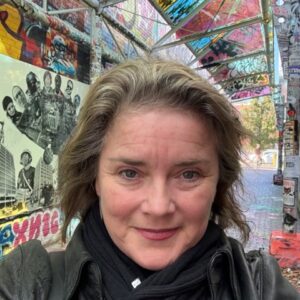
On Christmas Day, Hopkins left Boston for a month-long sojourn from London to Spain. Travel is central to her practice. Her photographs, neatly presented by year on her website, are titled according to the places they were taken: Portugal, Greece, Amsterdam, Denmark, Cuba, and Miami.
While the average traveler looks for museums, parks, and landscapes, Hopkins avoids tourist sights. For her, traveling is an opportunity to find unexpected colors and marks. “I don’t do portraits or scenery,” she says. “I go down alleys; I go behind things to get what I need.”
After a brief stay in London, Hopkins hoped Seville would excite her restless eye. “It’s very beautiful, very clean,” she says, “but it’s not for me. There’s not a lot of graffiti or paint anywhere.” Still, in Seville she found something that worked: a cement wall painted with flat colors. In her photograph, an orange triangle points upward, and yellow swirls could be mistaken for a gesture by Robert Motherwell, who made paintings inspired by the dunes and sea in Provincetown.
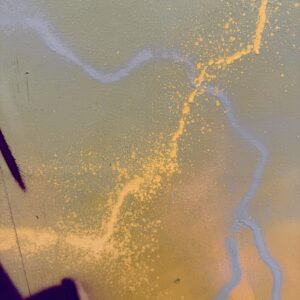
Madrid also seemed sterile to Hopkins. It was very “black and white,” she says, with its white streets and steel architecture. “I like lots of color.”
Barcelona was more satisfying. Rampant tourism brought a wave of new construction to the city, but it still has its Ramblas, where there were enough wall scribbles to capture Hopkins’s attention. “The part still under construction was my happy place,” says Hopkins. “I got what I needed in one morning — stickers, painted-over signs, and swooshes of flat color.”

Her process involves spotting a fragment of something larger that pulls her in and shooting the photographs in bright sunlight to avoid shadows. “I will take one shot of each thing I’m looking at,” Hopkins says, “and usually don’t spend much time on one color.”
She last visited Barcelona two decades ago with her mother, art critic and historian April Kingsley, who died on the Cape in 2023. Kingsley’s The Turning Point: The Abstract Expressionists and the Transformation of American Art is a classic. Hopkins shared a love of travel and art with her mother: “I wouldn’t go anyplace if there wasn’t art to see,” Kingsley once said, according to her obituary.
Budd Hopkins, Grace’s father, painted large, colorful geometric forms that are still exhibited at galleries and museums. He was a sought-after teacher at Truro Center for the Arts at Castle Hill and part of the circle of abstract expressionists chronicled by Kingsley, which included Mark Rothko, Motherwell, and Franz Kline. Hopkins was a teenager when her parents divorced.
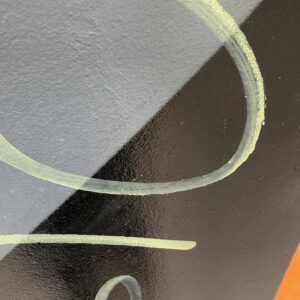
When Hopkins was 13, the family visited James Turrell, a friend who was working on a massive land-art project in the Arizona desert. Last year, she traveled to northern Arizona’s Painted Desert to see the project, titled Roden Crater. It’s a large installation, unfinished, within a dormant volcanic crater. It’s not yet open to the public, but it has gained mythical status in the art world. Like Hopkins, Turrell is interested in light, color, and abstraction but articulates this interest through architectural interventions and engineered spaces.
“The project is just amazing,” says Hopkins. “He has been a major influence on me.”
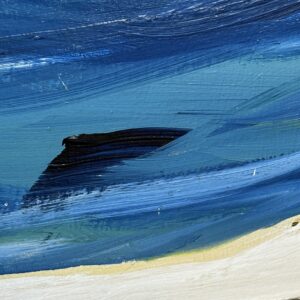
Hopkins’s last stop in Spain was the SoHo neighborhood of Málaga, which is considered a destination for urban art and underground culture. Hopkins looked for the dingy parts of town. In one image taken on the waterfront, circular and geometric swooshes intersect behind a purple circle. A close inspection reveals a purple drip at the center of the composition, as if a painter just stepped away from the canvas.
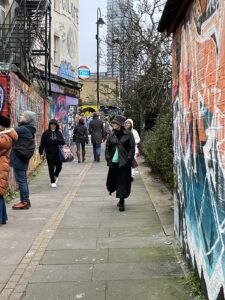
After Hopkins reviews her pictures, she usually selects 25 images from each trip that she labels with the site of the image, the year it was taken, and the number of copies. Whereas the abstract expressionists of the 1950s were known for their six-foot canvases, Hopkins usually makes 20-by-20-inch prints. But she’s curious about working on a larger scale.
She admires a recent project by photographer Joel Meyerowitz, who famously captured the Outer Cape’s land and seascapes. Last year, Meyerowitz had a show in Normandy where he enlarged his photos up to 40 feet and displayed them on the beach.
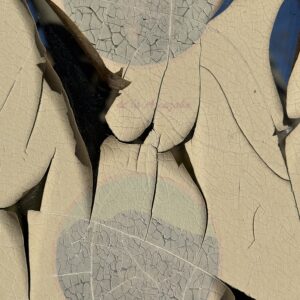
“I’d love to do something like that,” says Hopkins. “I’ve thought about enlarging one of my photographs and printing it on vinyl so it can hang on a large outside surface.”
This month, Hopkins is going to Victoria, British Columbia as a participant in Studio H Canada International Artists Residencies. Her focus will be more on writing than photography. She hopes to complete the family story she’s been working on for several years.
In many ways, she has continued the work of her parents as an artist, curator, and director of both the Berta Walker Gallery and Wellfleet’s Open University. But living with ambitious, creative parents wasn’t always easy.

“Growing up with my self-absorbed parents” is how Hopkins describes the material she’s worked through in her memoir. Its provisional title, My Life B-Roll, alludes to a technique videographers use to supplement the main shot.
“The memoir started out with my anger issues,” she says. “Toward the end I realized why I have this life and what I’ve made of it.”



